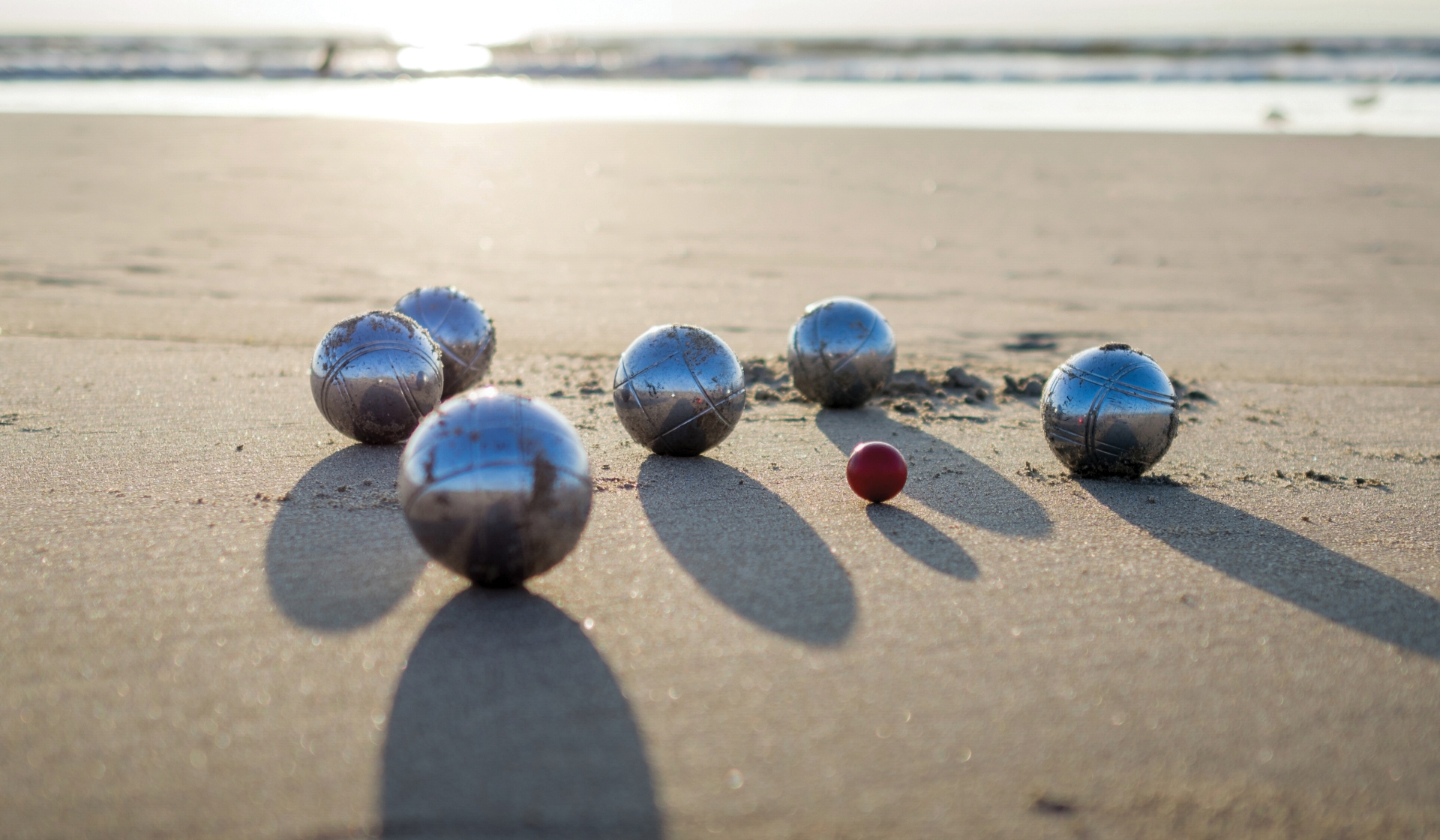Let’s Play Pétanque
The good times may be rolling into a backyard near you, with this popular Parisian pastime.
The good times may be rolling into a backyard near you, with this popular Parisian pastime.
A French word meaning “feet together,” no summer would be complete in France without a game of pétanque along the Bassin de la Villette. Pétanque is fairly straightforward to pronounce as French words go. You can break the word into two sounds: [puh] + [tonk]. While this ball sport has been enjoyed for decades throughout Europe, it is also gaining popularity around the world—especially in former French colonies in Southeast Asia, Africa, and the Caribbean. Today, it is estimated that pétanque is played in over 160 countries and by 30 to 40 million people, but remains relatively unknown in America.
While it might look similar to bocce, pétanque is its own distinct game with its own distinct set of rules, regulations, and culture. As Americans look to diversify their outdoor pursuits, pétanque is seeing a sudden surge in interest, especially in regions like the South where it can be played virtually year-round.
THE HISTORY OF PÉTANQUE
While ball games have been around since ancient Greek and Roman times, pétanque has a relatively short history, just over 100 years old. Like most good things, pétanque was born from necessity. The game was invented in 1907 near Marseilles in the South of France by a boules player named Jules Lenoir.
Lenoir had rheumatism, which prevented him from running to throw the ball in bocce. And so, he invented a spinoff game with a shortened playing field, roughly half the size of a bocce court, and a starting stationary position—rather than a running one. A good analogy to equate the game more easily, pétanque is to bocce, as pickleball is to tennis. They may appear to have similarities, but the nuance is in the differences.
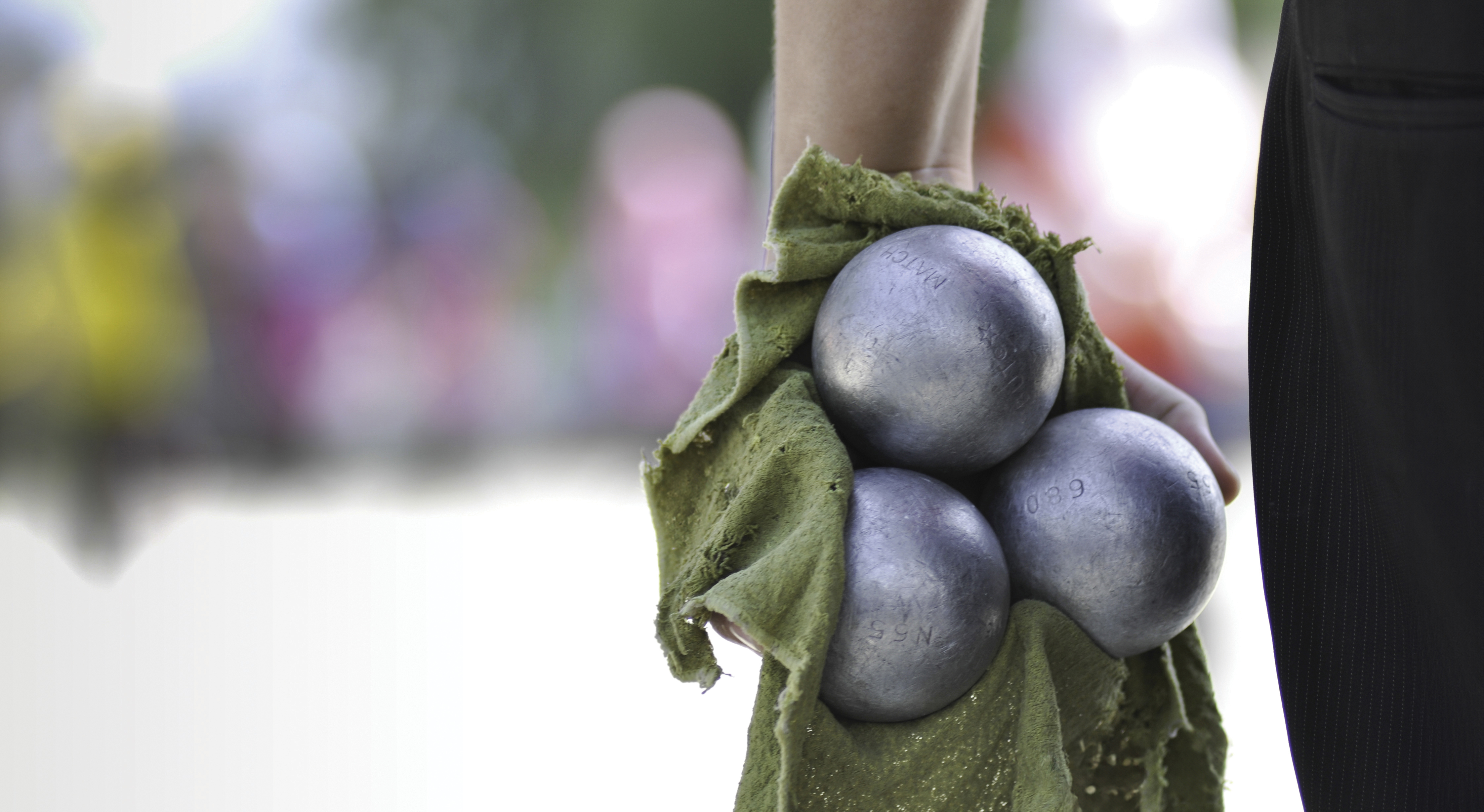
Player holding three petanque balls ready to make a throw.
Benji Tosi, a nine-timed U.S. Bocce Champion, also plays pétanque. Tosi loves that, unlike bocce, which can get extremely complicated, the rules of pétanque are the same anywhere you play, even if you’re playing competitively. “You can get people of all ages playing very quickly. They might not be playing at the highest level, but they’re having fun,” he says.
Kirk Edwards, president of Carolina Pétanque and vice president of Federation Pétanque USA, agrees. “The beauty of pétanque is that it’s accessible to anyone, young, old, those with disabilities. You just need some upper body movement.” He loves that it’s a very social game, with pickup players added easily. “It’s competitive, but also friendly,” he says.
Tosi also loves that the courts require little maintenance, and you can drop a pétanque court anywhere there’s a flat surface. “With bocce, you have to build a special court, with the right specifications and the right surface. With pétanque, draw lines in the dirt wherever you are. Maybe it’s a little gravelly, but who cares, it’s more challenging,” Tosi says. “It’s more portable than bocce.”
Like pickleball, pétanque is aimed at allowing a broader age range and skill set to play, over their more recognizable counterparts. While both pickleball and pétanque can be played at high levels, they can also be enjoyed casually, with the ability to create makeshift courts on a whim. This spontaneity adds to the overall festive spirit of both games.
THE RULES OF THE GAME
To get started, you’ll need at least two people to get a game of pétanque off the ground, as well as a court and a set of six balls. The game can be played as doubles (two players per team, three boules each), triples (three per team, two boules each), or one-on-one, with each player receiving three boules. Doubles is the most common way to play.
Players will draw a circle on the ground, about 20 inches in diameter, which is where they’ll toss from. Both feet must be planted within this circle. The team that goes first will have a player stand in the circle and toss the cochonnet, or target ball. (Cochonnet is French for “little pig.”) A member from the same team will toss their first boule, trying to get it as close to the cochonnet as possible, preferably in front of it.
GAME ON
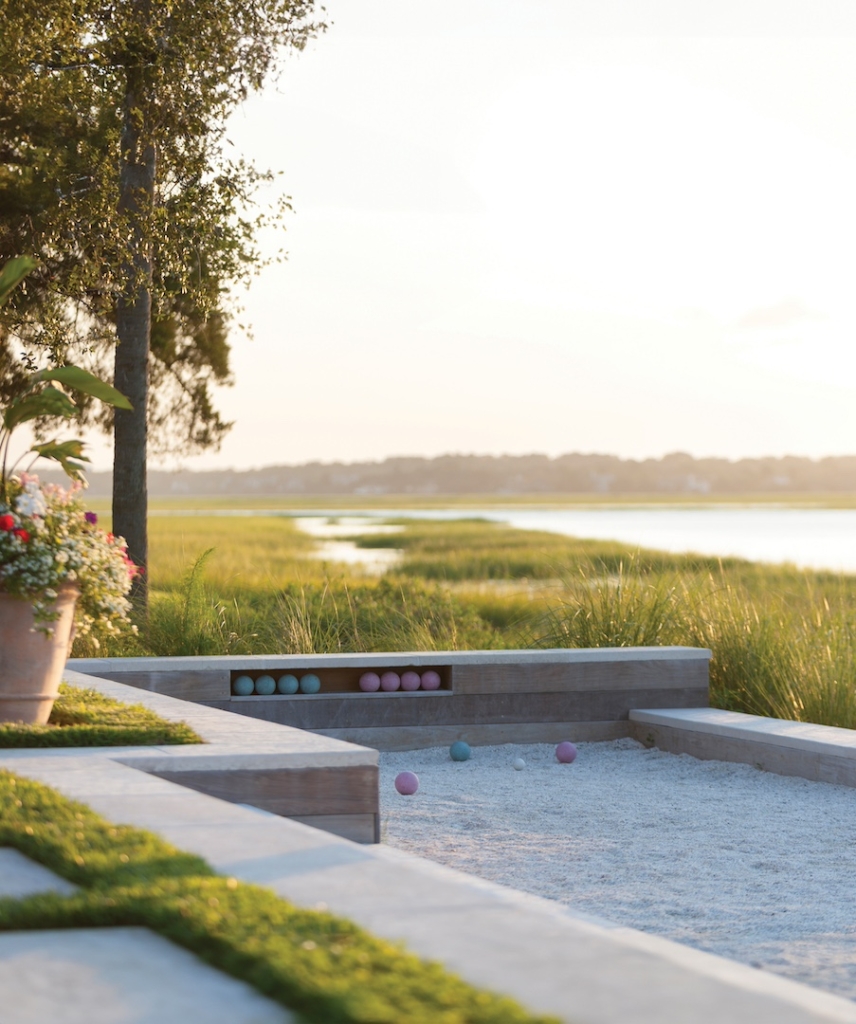 Casual outdoor games, similar to pétanque, dot the grounds of Sea Island and make a great social activity for families or between dinner and drinks. There are bocce courts next to the Sea Island Yacht Club dock to play while waiting for a scenic boat ride. The outdoor shuffleboard court at the Beach Club does not need to be reserved in advance and can be found between the Beach Bar and the playground. Over at The Cloister, there’s a giant outdoor chess set tucked into one of the courtyards.
Casual outdoor games, similar to pétanque, dot the grounds of Sea Island and make a great social activity for families or between dinner and drinks. There are bocce courts next to the Sea Island Yacht Club dock to play while waiting for a scenic boat ride. The outdoor shuffleboard court at the Beach Club does not need to be reserved in advance and can be found between the Beach Bar and the playground. Over at The Cloister, there’s a giant outdoor chess set tucked into one of the courtyards.
And at The Lodge at Sea Island you’ll find Speedway, the property’s 18-hole putting course. Designed by Davis Love III and his brother, Mark Love, the course has sweeping views of the water and the hole locations change frequently to keep guests—and the occasional pro—on their toes.
From there, it’s a game of who can get it closest to the target ball, or who can successfully knock out as many opponents’ boules close to the cochonnet. Each team gets a turn ball by ball to earn a point by doing one of these two things. The round is over once all the boules are thrown by both teams. Points are tallied at the end of each round and the game is over when a team reaches 13 points.
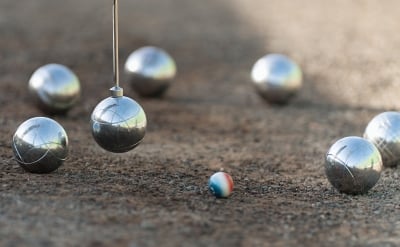
In pétanque, players use a magnetic pick-up tool to retrieve their boules from the court so that they do not disturb another player’s boules.
A SLOWER PACE
Edwards got his start like many do: from someone French in his community teaching him the rules. While pétanque is enormously popular all over France, it still does not have the American recognition of say the Tour de France or Roland-Garros. But, in terms of the number of players and how it symbolizes the French way of life, it’s a cornerstone of the country’s culture.
“Pétanque is uniquely French,” describes Paul Shore, author of My Year in Provence Studying Pétanque, Discovering Chagall, Drinking Pastis, and Mangling French. “It brings local people together to share friendship, while giving them a break from their daily work or worries. And the French are wonderfully social, valuing calm time with close friends and family, from deep conversations, sipping coffee, or wine, to long, multi-course meals with plenty of discussion.” Pétanque embodies that very ideal.
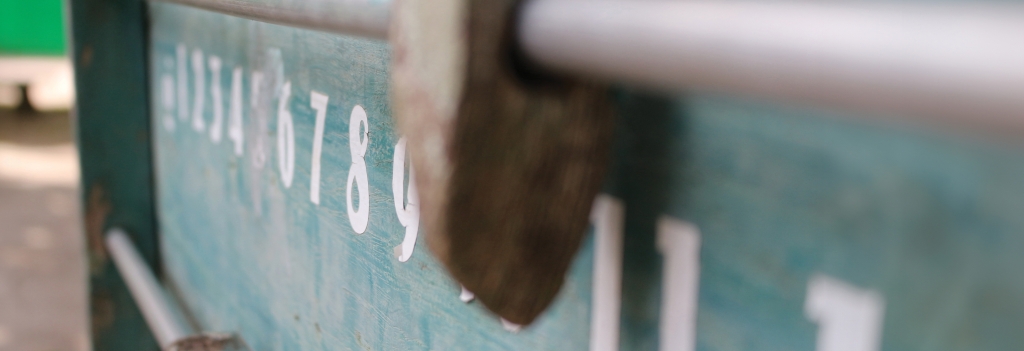
Players keeping track of their score for each round.
Edwards says to look toward French restaurants and the Alliance Française in your community, if you have one, as they’ll be able to point you in the right direction for places that have courts and or leagues. Additional resources can be found at Pétanque America and Federation Pétanque USA’s websites, where members will be able to direct you to the right people in your area.
Given its worldwide popularity, pétanque, along with other boules sports, made a bid for the 2024 Olympics in Paris. It was, however, unfortunately declined. It’s safe to say the sport is still on the rise both recreationally and competitively. If a low-impact, highly social outdoor game is of interest to you, then consider pétanque to laissez les bons temps rouler.
ROLLING TOWARDS VICTORY
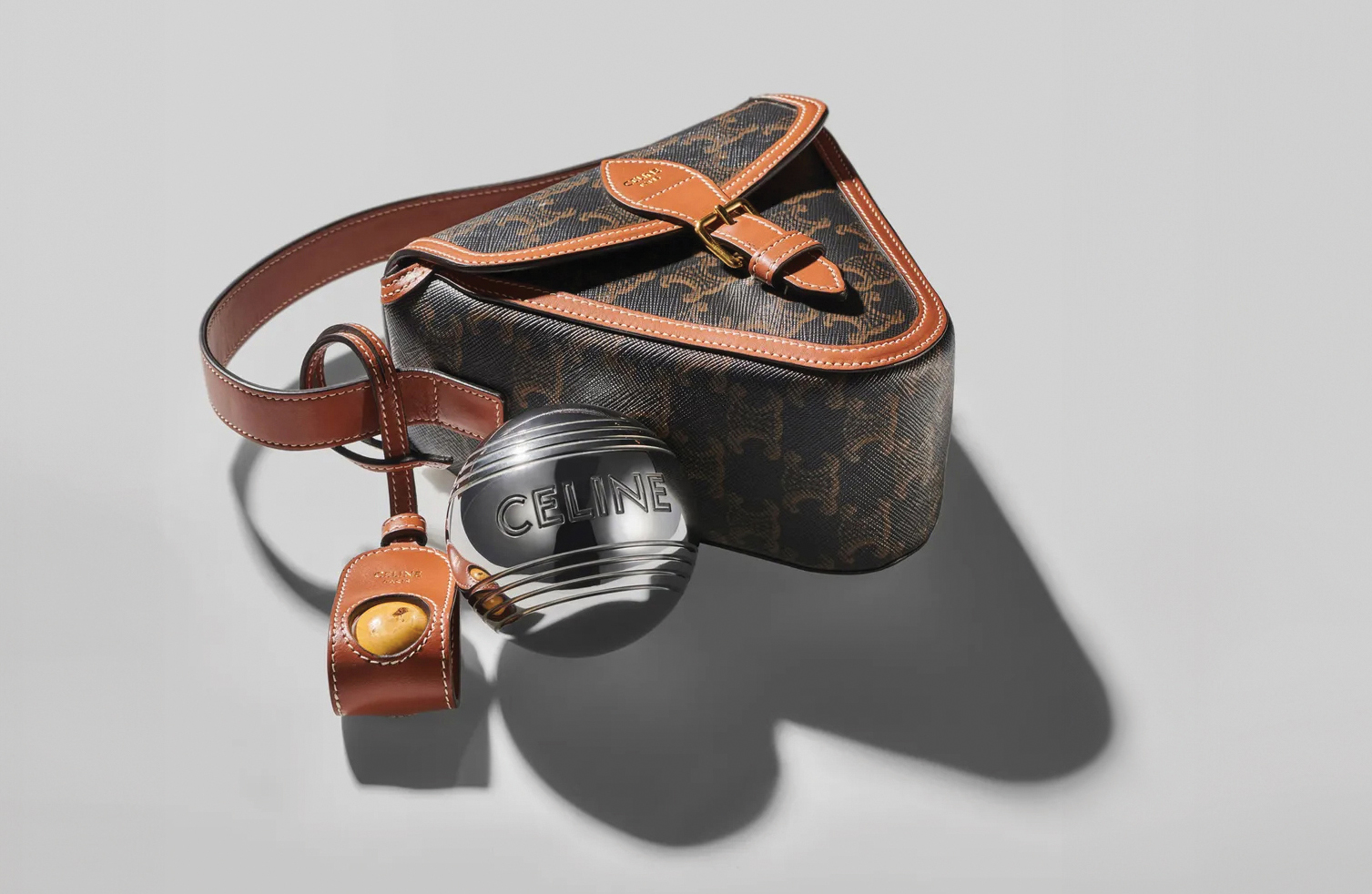
Celine pétanque set.
Pétanque Set | $1500
Celine | celine.com
Wicker Boule Pétanque Set | $1612
Geoffrey Parker | geoffreyparker.com
Indoor Boules Set | $350
Noble MacMillion | noblemacmillan.com
Wooden Pétanque Set | $105
Vilebrequin | mrporter.com




